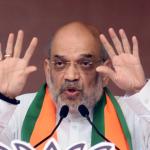Despite a landscape marked by persistent global uncertainties, India's economy has showcased remarkable resilience, maintaining its robust growth momentum. A recent report by CareEdge Economic Pathways highlights that the nation's real GDP expanded by a robust 7.4% in the fourth quarter of Fiscal Year 2025 (FY25), culminating in a full-year growth of 6.5%. While this marks a slight moderation from the 8.4% average seen in the preceding two years, the report firmly asserts that the Indian economy remains on a strong footing.
The sustained growth is largely attributed to the robust performance of key sectors. The services and construction sectors have been the primary drivers of economic momentum, with construction activity, in particular, registering an impressive 10.8% growth in Q4 FY25. Manufacturing also showed encouraging improvement, contributing to the overall positive outlook.
A significant positive development on the macroeconomic front is the notable easing of retail inflation. The Consumer Price Index (CPI) dropped to 3.2% in April 2025, marking its lowest level since August 2019. This moderation in inflation, especially in food prices, has been aided by the timely arrival of Rabi harvests, comfortable reservoir levels, and optimistic projections of above-normal monsoon rainfall. For FY26, inflation is projected to average 4.0%, down from 4.6% in FY25, providing a more stable environment for economic activity.
On the fiscal front, the central government has successfully maintained its fiscal deficit target for FY25 at 4.8% of GDP. This was achieved despite slightly lower direct tax collections, thanks to strong corporate tax revenues and disciplined government spending. Furthermore, capital expenditure by both central and state governments exceeded expectations, reaching ₹10.5 trillion in FY25, with a significant pickup in the latter half of the year. This robust public investment has been instrumental in crowding in private sector announcements and facilitating the completion of government projects, leading to a sharp improvement in overall investment activity in Q4 FY25.
While private consumption witnessed some moderation, rural demand has remained steady, supported by robust wage growth. This balanced demand profile, coupled with improving manufacturing and electricity sectors, paints a picture of broad-based growth.
The Reserve Bank of India (RBI) has also played a proactive role in supporting economic growth. In June, the central bank cut the repo rate by 50 basis points to 5.5% and announced a phased 100 basis point cut in the Cash Reserve Ratio (CRR), measures designed to boost liquidity in the financial system and encourage investment. Despite some volatility in Foreign Portfolio Investor (FPI) flows and higher oil prices causing a slight weakening of the rupee, the Indian currency has remained stronger than its previous lows.
CareEdge's report projects continued stability for FY26, with moderate inflation, steady growth, and sustained investment momentum. This optimistic outlook underscores India's growing economic resilience, making it a bright spot in an otherwise uncertain global economic landscape. The nation's strong domestic demand, strategic government policies, and an evolving financial sector are proving crucial in navigating external headwinds and sustaining its trajectory as one of the world's fastest-growing major economies.










